Introduction to Melon Cultivation
Melon (Cucumis melo) is a sweet and refreshing fruit, highly popular in global markets. Its cultivation requires careful management to ensure high-quality fruits and good yields. This article covers the agronomic practices necessary for successful melon cultivation, from soil preparation to harvest and post-harvest management.

Land Selection and Soil Preparation
Ideal Climatic Conditions
Melon thrives in warm and dry climates, with optimal temperatures between 25°C and 30°C. It is sensitive to cold and does not tolerate frost well, so it is important to choose an appropriate time for planting. Direct and consistent sunlight is essential for good fruit development.
Soil Selection
Melon prefers sandy or sandy-loam soils that provide good drainage and are rich in organic matter. A soil pH between 6.0 and 7.5 is ideal for melon cultivation. It is crucial to avoid heavy or poorly drained soils, as excess moisture can lead to root diseases.
Soil Preparation
- Deep Tillage: Perform deep tillage to improve soil structure and promote root development.
- Soil Amendments: Incorporate organic matter, such as compost or well-decomposed manure, to improve soil fertility and water retention capacity.
- Proper Drainage: Ensure a good drainage system to avoid waterlogging, which can be detrimental to the crop.
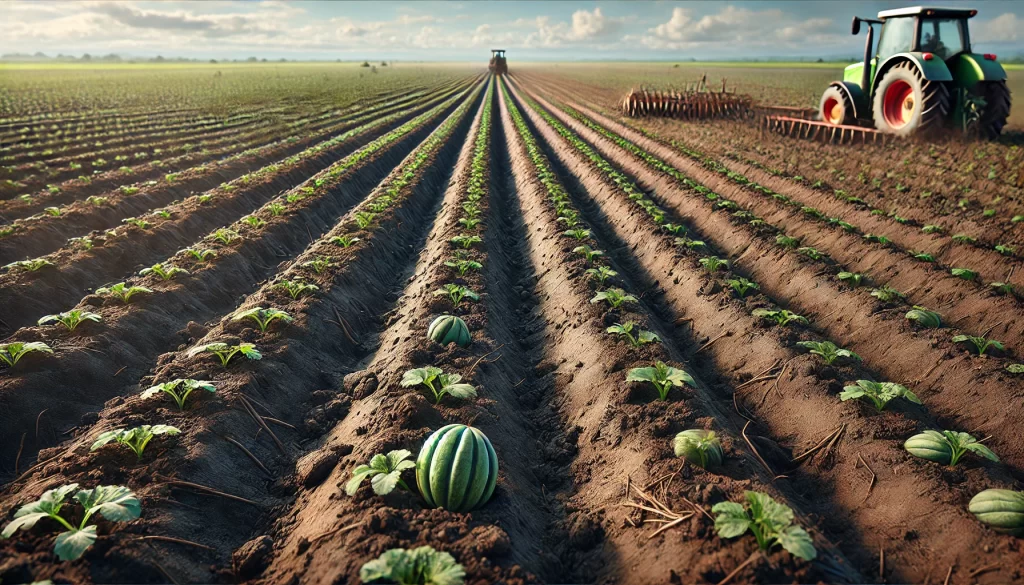
Melon Sowing and Planting
Sowing Methods
Melons can be sown directly in the field or by transplanting seedlings. Direct seeding is common in large areas, while transplanting is used to have greater control over initial growing conditions.
Seed Preparation
- Seed Selection: Use certified seeds to ensure good germination and uniform crop development.
- Seed Treatment: Seeds can be treated with fungicides to prevent diseases during germination.
Direct Sowing
- Sowing Depth: Seeds should be sown at a depth of 2 to 3 cm, with a spacing of 60 to 90 cm between plants and 150 to 200 cm between rows.
- Sowing Conditions: Sowing should be done when the soil is warm and moist, which favors rapid and uniform germination.
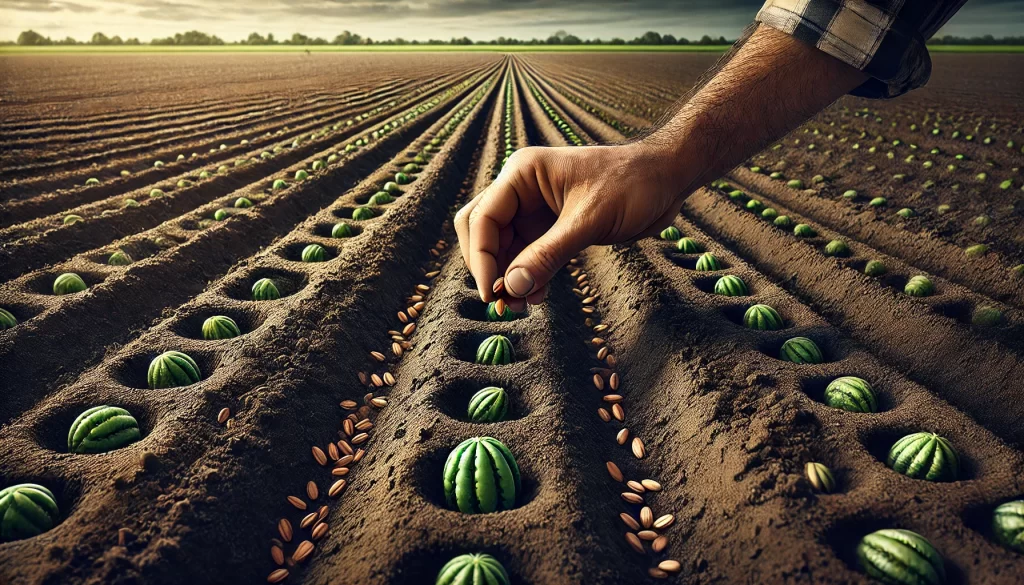
Transplanting Seedlings
- Seedling Production: Seeds are sown in germination trays under controlled conditions. The seedlings are ready to be transplanted when they have 3 to 4 true leaves.
- Field Transplanting: Transplant during the cooler hours of the day and water immediately after to reduce water stress.
Irrigation and Water Management
Water Requirements of Melon
Irrigation is crucial for melon development, especially during the flowering and fruit development phases. Water needs vary according to the growth stage:
- Establishment: Moderate watering to ensure germination and seedling establishment.
- Vegetative Growth: Maintain regular irrigation to promote foliage development and flower formation.
- Fruit Development and Maturation: Increase irrigation frequency during fruit formation and growth, but reduce it in the final stage to improve flavor and sugar concentration.
Irrigation Systems
- Drip Irrigation: It is the most efficient system for melon cultivation as it provides water directly to the root zone, minimizing evaporation loss.
- Sprinkler Irrigation: Less efficient than drip irrigation, it is used in large fields, but care must be taken to avoid over-wetting the leaves, which could favor the development of diseases.

Melon Fertilization
Nutritional Requirements
Melon is nutrient-demanding, especially in nitrogen, phosphorus, and potassium. A balanced fertilization plan is crucial to ensure vigorous growth and high-quality fruit production.
- Nitrogen (N): Promotes vegetative growth and leaf formation.
- Phosphorus (P): Essential for root development and flowering.
- Potassium (K): Improves fruit quality, disease resistance, and storage capacity.
Fertilization Plan
- Base Fertilization: Incorporate an NPK mix before sowing or transplanting to prepare the soil.
- Top Dressing: Apply fertilizers at various stages of the crop cycle, adjusting the doses according to soil analysis and plant development.
- Foliar Fertilization: Use foliar applications of micronutrients to correct specific deficiencies and improve crop yield.
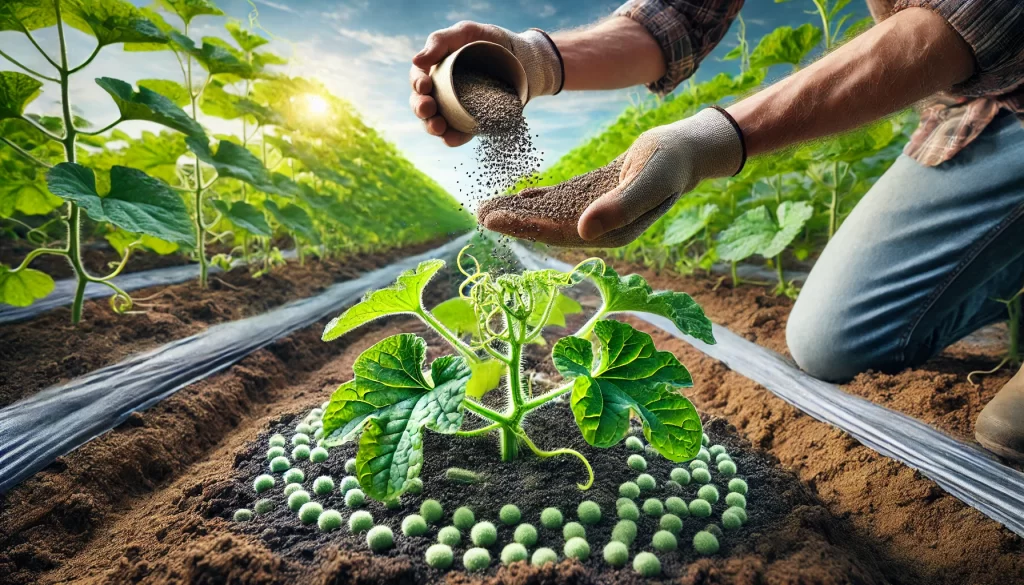
Pest and Disease Management
Common Pests
Pest management is essential to maintain the health of melon plants and ensure the production of high-quality fruits. The most common pests include:
- Aphids: They attack young shoots and can transmit viral diseases.
- Whiteflies: They feed on the sap of leaves, causing plant weakening and transmitting diseases.
Control Strategies
- Regular Monitoring: Inspect the plants regularly to detect pests in a timely manner.
- Biological Control: Introduce natural predators such as ladybugs and parasitoid wasps.
- Insecticide Application: Use specific products following technical recommendations to minimize environmental impact and avoid resistance.
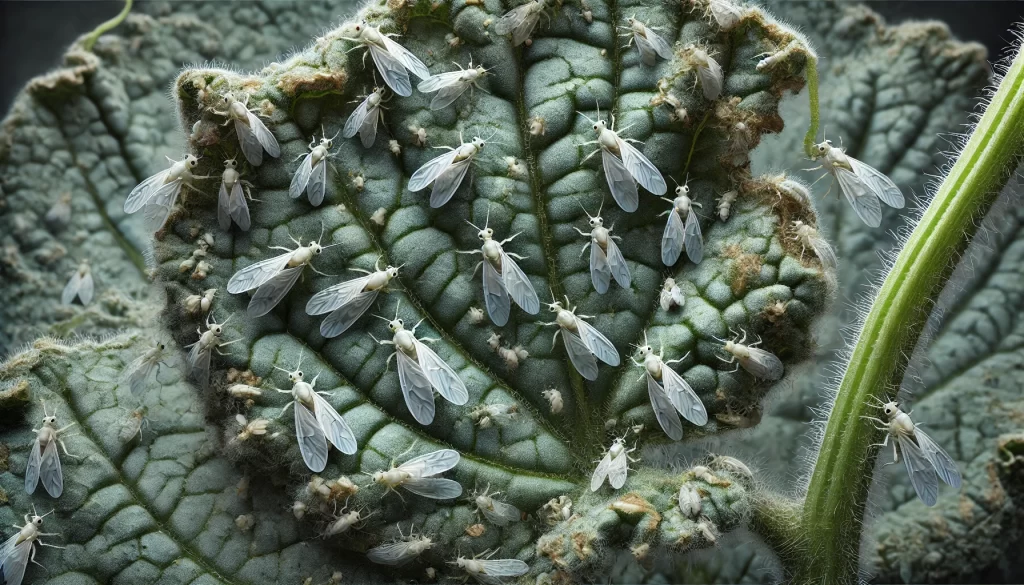
Common Diseases
Diseases can significantly affect melon crop productivity. The most common include:
- Powdery Mildew (Erysiphe cichoracearum): A fungus that affects the leaves, causing a white layer that reduces photosynthesis and plant vigor.
- Anthracnose (Colletotrichum spp.): A disease that causes dark spots on fruits and leaves, reducing quality and yield.
Control Strategies
- Sanitary Management: Remove disease-affected parts to reduce the spread.
- Fungicide Use: Apply preventive and curative fungicides under conditions favorable to disease development.
- Crop Rotation: Avoid planting melons in the same area for several consecutive years to reduce disease pressure.
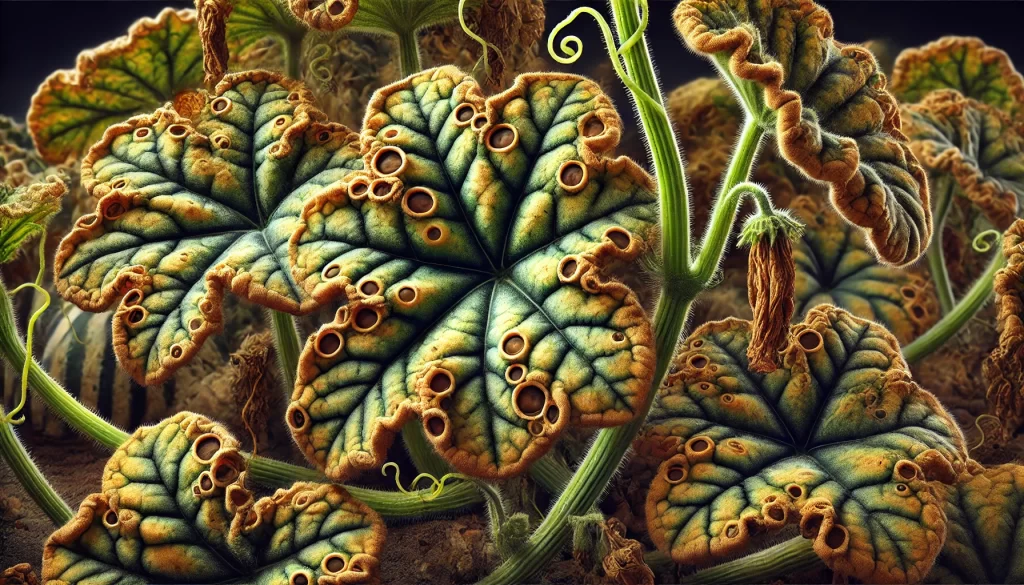
Harvest and Post-Harvest Management
Maturity Indicators
Melons are harvested when the fruits have reached physiological maturity, which can be determined by:
- Rind Color: The fruit acquires a characteristic color depending on the variety, and the rind becomes more flexible.
- Aroma: Ripe melons emit a sweet and characteristic aroma.
- Size and Weight: The fruits reach the characteristic size and weight of the variety.
Harvest Techniques
The harvest is done manually, cutting the fruits with a knife or scissors, leaving a small stem. It is important to handle the fruits carefully to avoid damage that could reduce their shelf life.
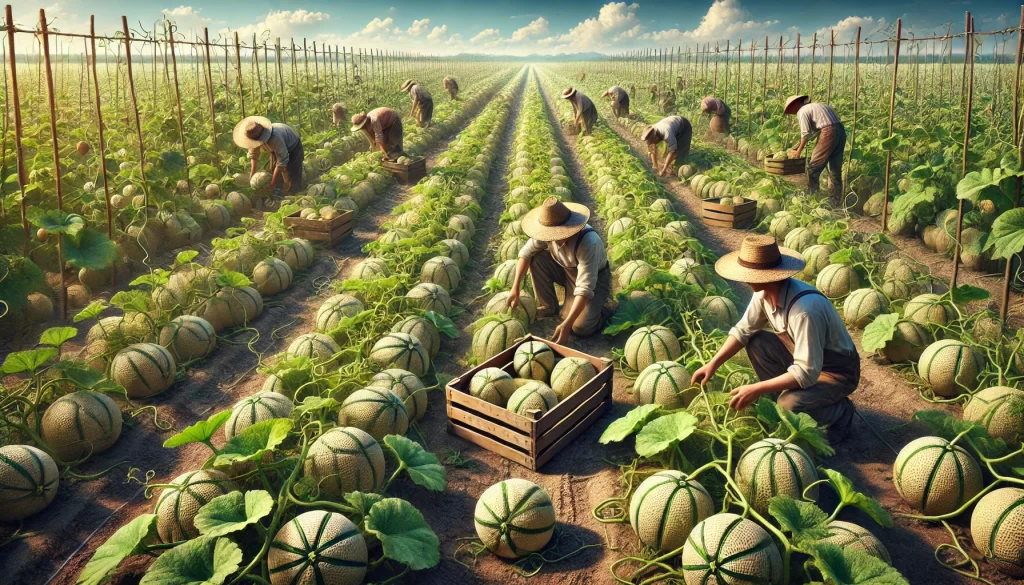
Post-Harvest Management
Post-harvest management is crucial to maintain the freshness and quality of melons until they reach the final consumer. Recommended practices include:
- Washing and Sorting: Remove impurities and sort the fruits by size, color, and quality.
- Storage: Keep the fruits in a cool place, preferably at a temperature of 7-10°C, to prolong their shelf life.
- Transportation: Transport the fruits in ventilated boxes to avoid physical damage and preserve their quality during transit to the market.
 AgronoBlog – Agriculture Blog
AgronoBlog – Agriculture Blog 


